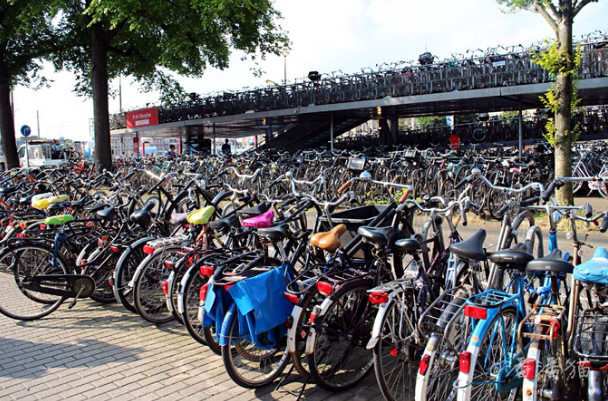Due to the deep-rooted car culture in the U.S., Americans are used to driving even for short trips, so the use scenario of U.S. e-bike consumers is not as a means of transportation, but for leisure and fitness.
And compared to regular bicycles, e-bikes are much more expensive in the U.S. On average, an e-bike sells for between $1,000 and $3,000, and many e-bikes can sell for $6,000. So in the US market, e-bikes are still a niche product.
Why are there so few e-bikes used in the US? In fact, we can know the reason by analyzing the geographic conditions and urban planning in the US. Usually the most convenient travel range of electric bicycle is about 3-10 km distance than walking, for the general country, it can almost cover people’s travel range very easily.

But 90% of the United States is a barren land connected by highways. If you don’t live in a big city, it’s likely that Americans will have to run 20 kilometers to Walmart to buy groceries, and the number of one-time purchases is so large that the carrying capacity of electric bikes can’t meet the demand.
In addition, the concept of urban planning in the United States also determines that there is no place for electric bicycles. Restaurants, grocery stores, stores of all colors and residential buildings are all intermingled together in a haphazard way, but in reality, within a 10-minute walk, Americans can find almost anything they need.
There are no independent bike lanes in the US (even if there are occasionally bike lanes on the ground, they are mixed with motor vehicles), and with the high speed of cars in the US, riding an electric bike in a big city is actually a scary thing, with little guarantee of safety. So from the point of view of daily travel, Americans who live a little farther away are completely dependent on driving, and those who live in the city generally tend to choose to take public transportation.
But even though the market is relatively niche, the U.S. is still a major exporter of electric bicycles to China. In recent years, e-bikes have begun to gain a foothold in the huge U.S. sports and recreation market.
One quarter of the traditional bicycle stores in the U.S. have started selling e-bikes, and 90% of the customers buying e-bikes are cycling enthusiasts, with the “baby boomer” generation of middle-aged and elderly people being the majority, because they need fresh air and exercise, but don’t want to sweat too much, and e-bikes are just right for them. They need fresh air and exercise, but don’t want to sweat too much.
There are no independent bike lanes in the US (even if there are occasionally bike lanes on the ground, they are mixed with motor vehicles), and with the high speed of cars in the US, riding an electric bike in a big city is actually a scary thing, with little guarantee of safety. So from the point of view of daily travel, Americans who live a little farther away are completely dependent on driving, and those who live in the city generally tend to choose to take public transportation.
In 2017, e-bike sales in the U.S. rose by a whopping 440% to 263,000 units, 80% of which were imported from China. However, as the trade war between the U.S. and China intensifies, a 25% tariff will be imposed on both e-bikes and e-bike motors, after the tariff rates for both were 0% and 4%, which will be a fatal blow to Chinese e-bike companies that want to enter the U.S. market.
